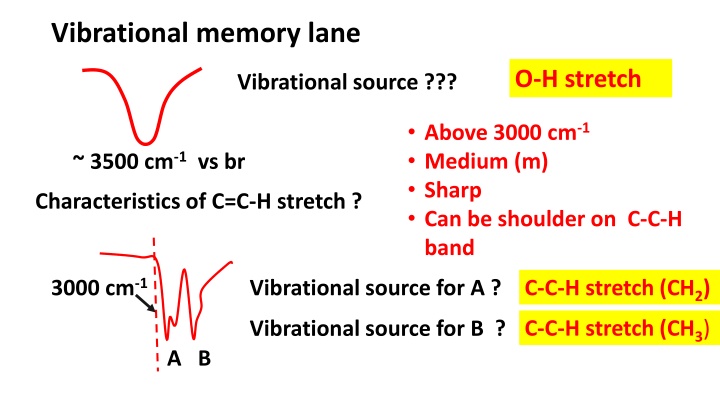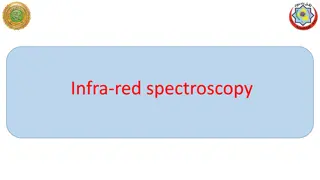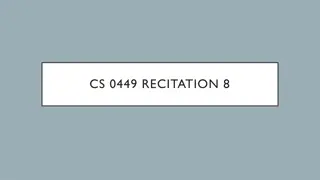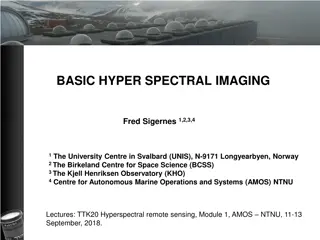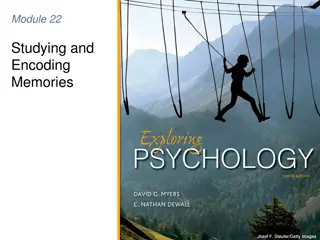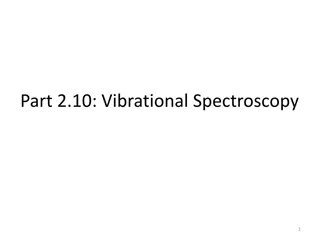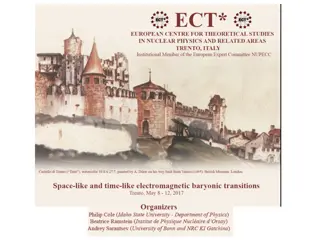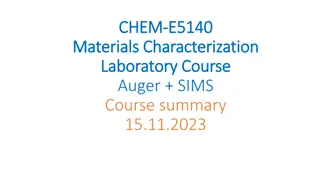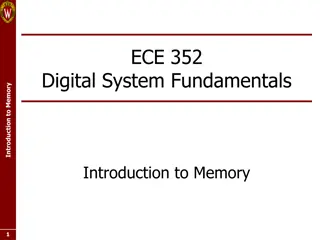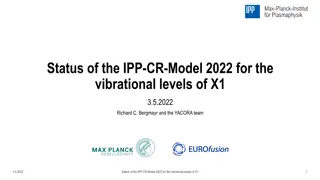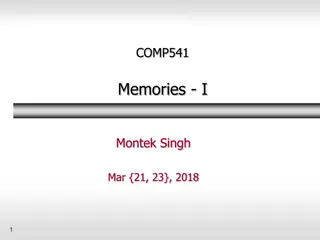Vibrational Memory Lane: IR Spectroscopy Insights
In this comprehensive guide to IR spectroscopy, explore the intricate details of vibrational frequencies in molecules. Learn about characteristic peaks, functional groups, and diagnostic regions to analyze infrared spectra effectively. Identify key vibrational sources, ring modes, and conditions for IR activity. Dive into assignments of functional groups, chain lengths, and aromatic functionalities. Uncover the nuances of organic compounds through IR correlations and spectral interpretations.
Download Presentation

Please find below an Image/Link to download the presentation.
The content on the website is provided AS IS for your information and personal use only. It may not be sold, licensed, or shared on other websites without obtaining consent from the author.If you encounter any issues during the download, it is possible that the publisher has removed the file from their server.
You are allowed to download the files provided on this website for personal or commercial use, subject to the condition that they are used lawfully. All files are the property of their respective owners.
The content on the website is provided AS IS for your information and personal use only. It may not be sold, licensed, or shared on other websites without obtaining consent from the author.
E N D
Presentation Transcript
Vibrational memory lane O-H stretch Vibrational source ??? Above 3000 cm-1 Medium (m) Sharp Can be shoulder on C-C-H band ~ 3500 cm-1 vs br Characteristics of C=C-H stretch ? 3000 cm-1 Vibrational source for A ? C-C-H stretch (CH2) C-C-H stretch (CH3) Vibrational source for B ? A B
Vibrational memory lane (continued) Weak multiplets near 2000 cm-1 dead give away for Speaking of rings where are the two main ring breathing modes ? Aromatic ring ~1500 and 1600 cm-1 Vibrational source ? 1690-1710 cm-1 vs shp C=O (carbonyl) stretch 1. Aldehydes (RCHO) 2. Ketones (RR CO) 3. Carboxylic acids (RCOOH) Name 3 compound classes that could exhibit C=O ?
Vibrational memory lane (continued) ~ positions of CH2 and CH3 bends ?? ~1420 and 1370 cm-1 What two possible conditions are required for a molecule to be IR active ? 1) Permanent dipole The diagnostic region is mostly created by what kind of vibration ? 2) induced dipole stretches The diagnostic region allows you to determine a molecule s . Functional groups The fingerprint region is mostly created by what kind of vibration ? bends The fingerprint region allows you determine a molecule s Specific identity formula for the number of possible vibrations for a non-linear molecule with N atoms 3N-6
1) Whats my likely functional group ? 1370 3000 710 alkane 1470 2)Long or short chain ? 3)Use IR correlation table to assign this band s motion Relatively short; 1370 and 1470 are not too different Methyl group wag
1) What is my main functionality?aromatic 2) * 4 bands used to make this assignment 3000 1640 1470 * Ring overtones * C=C-H stretch *Ring breathing modes 1360 1520 Yes..alkyl group (probably just one) 3) Is ring substituted and if so with what ?
OH 1) Guess my main functionalities 3) Who am I ? ~ 2000-1800 Z ~3400 2) what s weird here ? OH 1600 1500 3000 1300 No strong evidence of either CH2 or CH3
2)`Organic ? Why/Why not? 2)Not..no C-H stretches or bends 1)What s different with this IR ? 3)Guess what the compound is based on what you know * * * 1)Upside down. Plots Absorbance A not % T: A= 2-log %T 3. H2O Strong OH at 3400 3*3-6=3 bands * expected
Cat IR http://lynettesue.com/wp-content/uploads/2014/04/stretching_cat.jpg http://recoilmag.com/wp-content/uploads/2014/01/Stretching-cat-wallpaper_7784.jpg Fingerprint bending region Diagnostic stretching region
